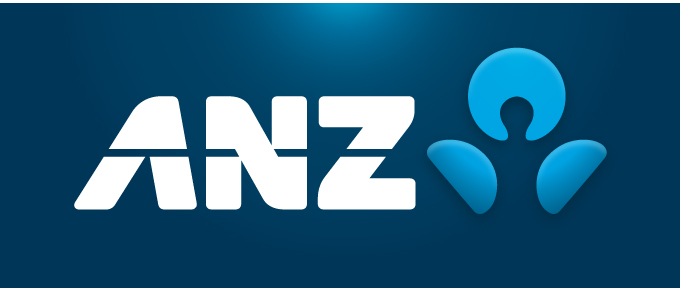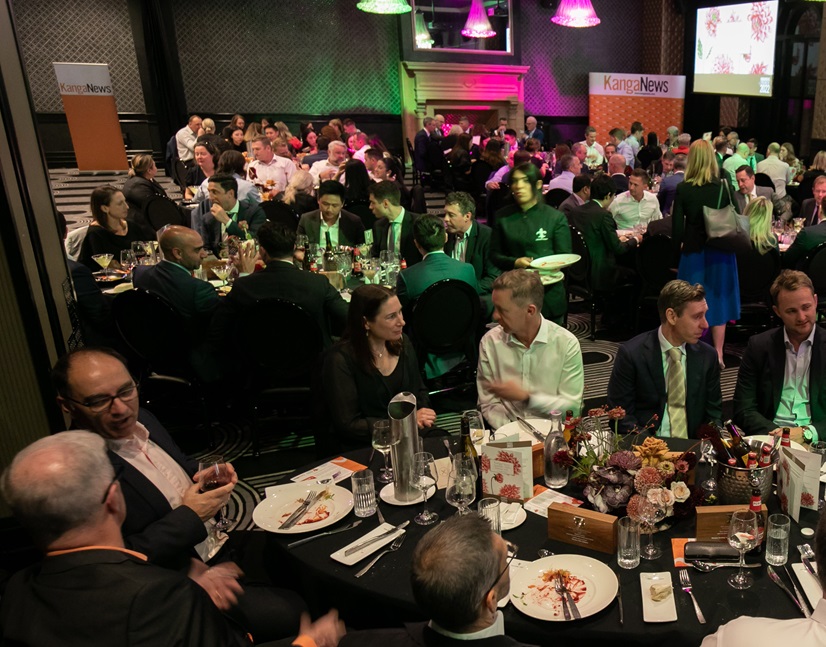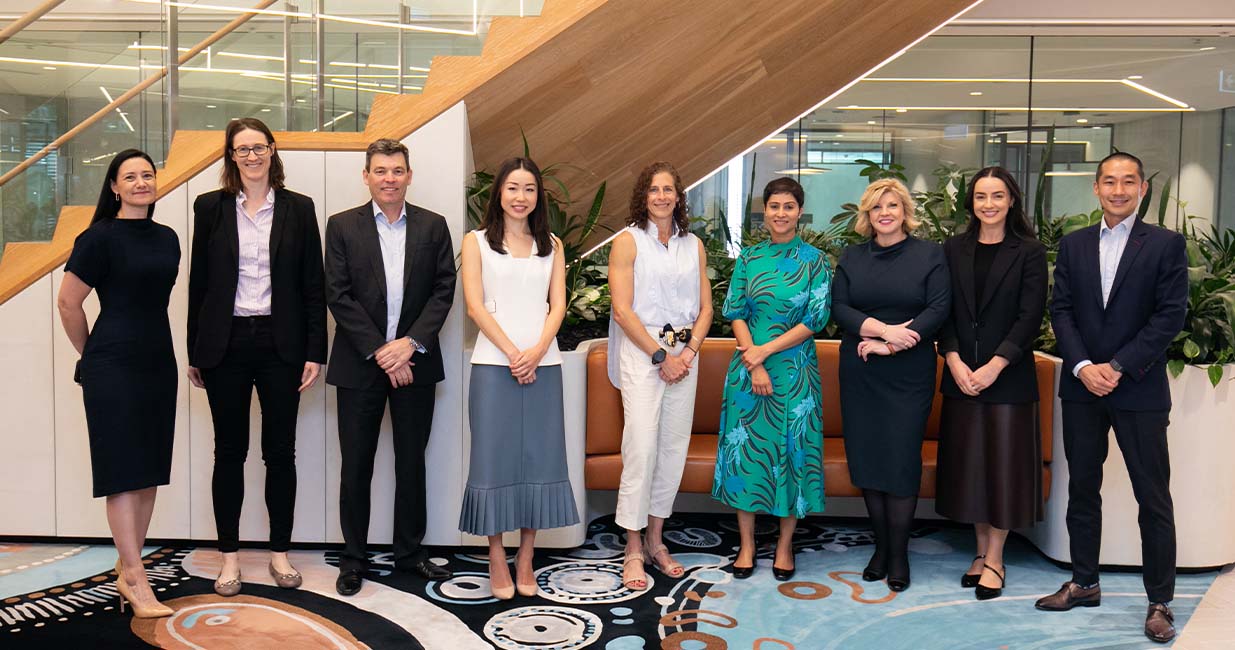
Recruitment and retention in the sprawling landscape of diversity
In early November, ANZ and KangaNews hosted a group of the bank’s leaders and other industry participants to share their personal perspectives on why inclusivity is so important to the economy and business, the value of engagement, and how the Gen Z lens means everything companies have learned about their workforce in the past is going to change.
DIVERSITY IN CONTEXT
Craig What are the potential impacts on businesses of not addressing gender diversity?
YETSENGA Struggling to attract talent is the most obvious consequence of a business not challenging itself on the diversityof its workforce. There is a talent shortage, and it is going to getworse in Australia.
The over 80s population has been rising by about 25,000 people a year for the past couple of decades. We are going through a five- or six-year phased shift, though, which means it will be rising by about 60,000 people a year starting from about 2027.
If a business is narrowing its scope of employment to one segment of the pool, it is missing out – and will be making recruitment far more challenging.
ENKATESAN A 2018 UN report that analysed 141 countries claimed that not prioritising gender equality costs the global economy close to US$160 trillion in wealth as a result of the disparity in lifetime earnings between men and women. Put in perspective, this is twice the total level of global GDP from 2018.
The Women’s Economic Equality Taskforce’s final report, published in October this year, states that the economic impact in Australia is A$128 billion (US$83.3 billion). In comparison, this seems a little on the low side but as more information emerges we will get a clearer picture of the cost to the economy and society.
As part of the OECD [Organisation for Economic Co-operation and Development], Australia is above average when it comes to workforce participation – that is, women in the workforce in Australia compared with the global average of OECD countries.
Interestingly, Australia has more women who work part-time or are self-employed. This implies that it is not sufficient to have equal participation in the workforce, because working part-time or being self-employed is not achieving gender pay parity – which is where I believe we as a country are losing our leading status.
Australia also ranks poorly on a global scale for paid parental leave. If I compare Australia with my experience living in Europe, it shocks me just how far behind Australia is.
There have been significant improvements in the last few years, including a number of companies addressing parental leave. But there is still work to do. One bit of good news is that every board I sit on discusses parental leave and how it is fundamental not only in attracting but also retaining women in the workplace.
TRIGONA We have supportive policies for diversity, equity and inclusion (DE&I) at NBN Co and these are essential to attract staff. Our parental policy applies to both parents: it provides 18 weeks’ full pay.
Another standout element of our DE&I policy is that mothers returning to work are paid for five days while working four, for a period of six months. We find most employees eventually return to work full-time, which is clearly a huge positive – and the decision appears to be partly driven by this initiative.
To touch on the gender pay gap, NBN is committed to promoting gender pay equity and has closed the gap between male and female employees. Our 2023 annual report shows that total fixed remuneration for women is now 0.85 per cent higher than men. This is the product of a big piece of work and further makes NBN an attractive workplace for women.
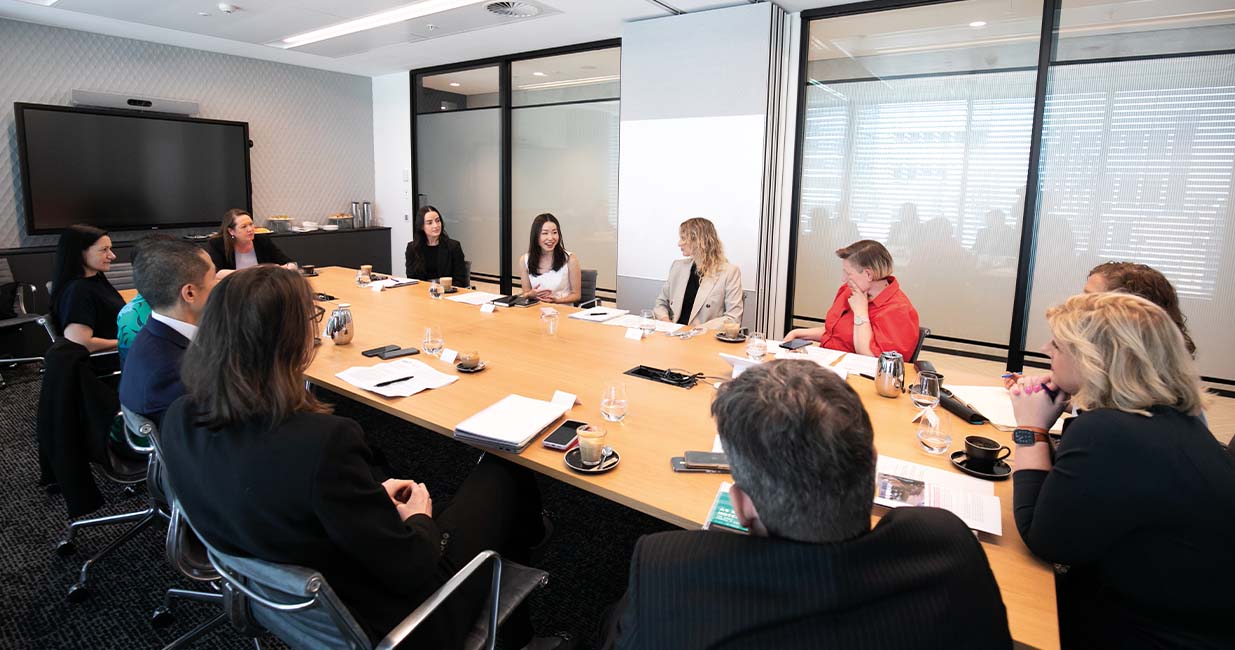
Choi Is this the first time NBN pay has favoured women?
TRIGONA Yes. Last year it was 1.1 per cent in favour of men. We have been focusing on attracting more women into senior leadership positions and many of the divisions within NBN are introducing initiatives to support promoting women.
This is part of our commitment to drive a culture that celebrates diversity, promotes equity and fosters inclusion. For example, our women in finance group actively encourages women proactively to put themselves forward for roles for which they might otherwise wait to be picked. We have started to see the fruits of these initiatives in the past year, with several women moving into more senior management roles.
VENKATESAN I am on the board of Mercer Investments. Mercer, as part of the NYSE listed Marsh McLennan, has developed a process to identify discrepancies in pay based on gender, globally, and on race or ethnicity in the US. The process examines the current base salaries and total compensation of colleagues in comparable roles to determine whether there are differences in pay that cannot be explained by objective factors. When unexplained discrepancies in pay are identified, adjustments are made. The most recent study covered our global workforce, and the results show a difference of less than 1 per cent between women and men, on a global basis, on both pay and total compensation.

LESSONS IN ENGAGEMENT
Craig Low engagement is estimated in the Gallup 2023 State of the Global Workplace report to cost the world economy US$8.8 trillion annually – equivalent to 9 per cent of global GDP. What are the key considerations when we talk about engagement?
YETSENGA The work from home issue is in many ways the most ‘tactile’ part of the engagement discussion, I believe. There is no doubt that there has been an adjustment for businesses and for asset owners, and in the way our cities operate – whereby the pulse of economic activity is in the CBD from Tuesday to Thursday and in the suburbs on Monday and Friday.
I also know that we have hit many labour market records for women in Australia in 2023. I don’t think it is any coincidence that women have become a more active part of the labour market as work has taken a flexibility phase shift over the past three or four years: their unemployment and underemployment is lower, their participation is higher, and their share of hours worked and full-time hours worked is at a record high.
GREENBERG There was always a need for flexible working but some employers were reluctant to embrace it until COVID-19 forced a change. It was always said that compliance issues made it impossible to trade from home. These issues were overcome when they had to be – when the health pandemic made it incumbent on businesses and employees to find a workaround. The hybrid model is now very effective.
The concern for employers has always been employees taking advantage of flexible working, particularly for companies with multiple moving pieces. Finding a balance is important. However, we have made great strides in working flexibly and, as Richard says, this is clearly having a positive impact on female representation in the labour market.
CHAPPELL The pandemic has certainly made flexible working more culturally acceptable. There were challenges in certain Pockets across the finance industry, but overall there is now very little stigma attached to a hybrid working model.
CHOI The new equality within the family unit is a big positive. Flexibility allows all caregivers to have a better work-life balance and with no stigma, as Gavin points out. This has had a positive influence on work culture as well, which is also a very worthwhile development.
VENKATESAN The pandemic forced organisations to think more innovatively about how to engage their workforces. Flexibility is one product of COVID-19. But how to engage with the people in a workforce if they are working partly from home and partly from the office is quite a challenge.
Companies are thinking innovatively about engagement with their workforce and thus retaining talent. One example is a company that has decided to offer its employees leave equivalent to the hours they spend travelling to work, as a way to encourage them into the office and thus prompt increased engagement.
The biggest issue Women in Banking and Finance (WiBF) had to face at the start of COVID-19 was how to engage its member base. We knew we had to innovate as we were concerned about the network’s future. This is how we started the WiBF monthly webinars.
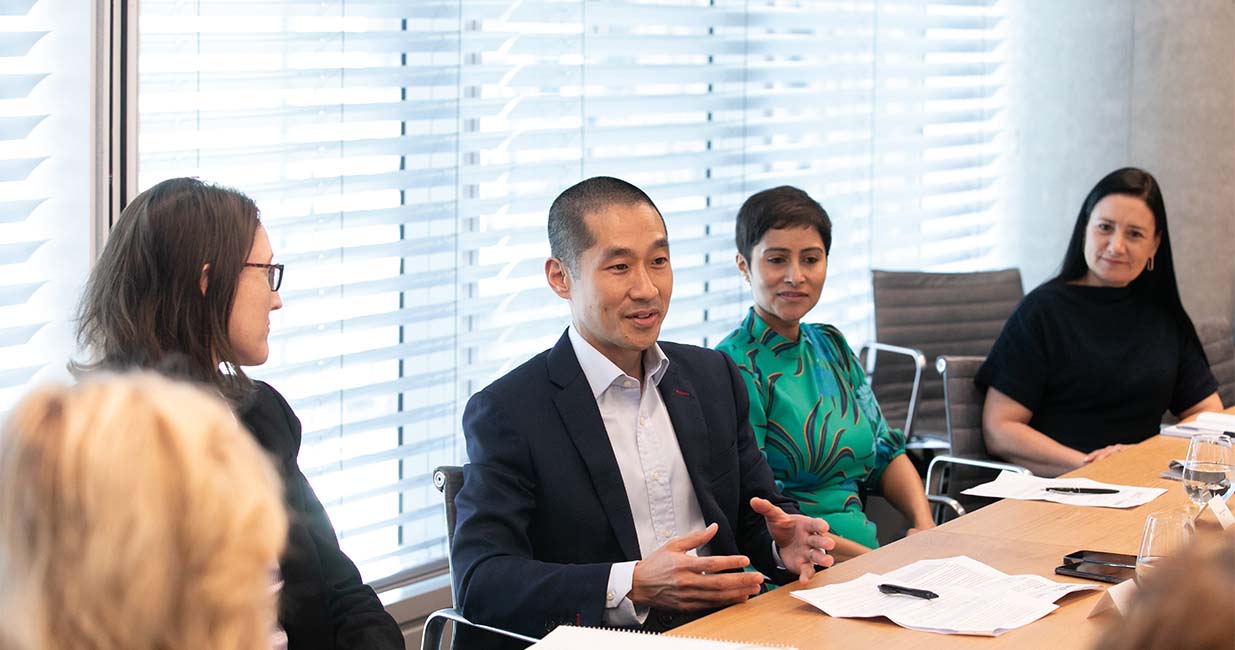
GIRARD The pandemic highlighted a growing need for everyone to find alternative ways to stay connected to industry trends as well as to keep up baseline knowledge. We can now travel again but our local and international members can still remain connected with the WiBF team through our webinars. This year, a record 9,000 people signed up with some more f the year left to run – which is almost double our total attendance from 2020. We have also launched a new platform that allows WiBF members in Australia and offshore to watch our webinars on demand.
Organisations are also highly cognisant of staff turnover. WiBF now has 96 corporate members, including 15 university partners, and through one-on-one meetings with members I started to hear a very clear message that we must adapt, particularly in leadership. To this end, WiBF will launch a new leadership programme in 2024.
The changing landscape and how this is supporting more equitable outcomes is not just about cultural and gender diversity but diversity of point of view, experience, training and working environment. Flexibility has brought many changes that have improved the industry. As much as we may still be adapting, I think it is very clear that we have come a long way.
Reflections on the pandemic and lessons learned
COVID-19 provided arguably the greatest shock to working practice in generations and it is clear that there will be no full-scale return to pre-pandemic norms. There are plenty of positive consequences but working through the ramifications remains a work in progress.
ZHANG Going into COVID-19 was very difficult. I had one year with many opportunities to travel and to network then, when COVID-19 happened, it felt like a lot was taken away very early on. I had just started in a new team so as well as working from home I had to learn a new role and create relationships with my new colleagues. It was made even more challenging because I was living in Melbourne, which had a longer lockdown than Sydney.
This said, we have reached a place where teams can choose to work in the way that suits them, and I think it’s fair to say that this may not have been possible before the pandemic.
My team typically works one day a week from home. From a learning and development perspective, it definitely helps to be in the office and therefore to have conversations with team leaders. Nevertheless, adjusting to such different environments was a valuable learning experience.
SHIFTING GENERATIONS
Craig Gen Z will account for more than a quarter of the workforce by 2025. Members of this cohort are the most racially and ethnically diverse generation the world has seen, they have had access to digital devices since early childhood and have grown up during a global pandemic and a climate crisis. How will these shifting generational dynamics and expectations influence the labour market and recruitment in the years to come?
YETSENGA I think, in all honesty, that Gen Z will transform us, not the other way around. When experienced people get together to talk about the upcoming generations there is often a ‘when I was a youngster’ tone to these conversations.
However, if we think about one challenge that’s right in front of us – AI, and how to harness, integrate and make it part of business as usual – there is absolutely no doubt that younger people will adapt more quickly and more efficiently, and will find more imaginative ways to use it than us ‘analogue’ people whose brains have been trained differently.
I believe the workplace will change naturally and there will be some natural selection. Workplaces that don’t change are making their talent challenge doubly hard and their survival may even be in question.
SICHLAU Looking at the state of play in graduate recruitment for banking and finance at the end of 2023, my view is that we do well on gender. We attract strong female talent and most of our cohorts are 50-50 or 60-40 weighted. Our biggest challenge is competing against other employers that pay a lot of money to attract recent graduates.
In my previous role, before I returned to ANZ, the hurdles were greater. I worked for a company that was very male-dominated and trying to attract female employees was a lot more challenging. ANZ has done a really fantastic job of restoring a balance at the graduate recruitment level.
Staff retention and recruiting at more senior level is the problem. Our successes are hiring juniors and bringing them up to middle-management level. Where it is more challenging – and perhaps this comes back to family dynamics – is hiring at director level. Either these pools do not exist at sufficient size or we have not figured out how to tap into them.
Richard makes a crucial point about natural selection and shifting generational dynamics. Our recruitment methods are 20 years old and we haven’t fully considered the different dynamics diverse candidates may need. Within my network, women generally take more time to decide to take a new job. They want to fully understand the organisation, role and expectations before they are willing to pursue an opportunity.
Superannuation slips on gender savings gap
Superannuation is a magnifier for financial inequality and, despite structural changes over the years, experts believe the system is still not fit for purpose in this respect. But there are ways to make the slow-moving train gather speed.
YETSENGA Of all the financial inequality statistics, superannuation will likely be the last to show the right sort of trends: people need a lifetime of income to accumulate their super balance and we are still working on the gender pay gap, let alone the hours and employment gaps.
There is a gap between men and women in the type of roles they tend to take, in addition to remuneration for those roles. Any of these gaps will magnify themselves in the superannuation imbalance.
There is progress in some areas. In the ordinary time earnings data, the gender pay gap hit a record low this year – of 13 per cent. But it is still 13 per cent – and this is only the ordinary time earnings data. But some variables are moving in the right direction.
We obviously need to work much, much harder on all the drivers including remuneration in roles, hours both genders have access to and the child penalty for women – we can do a lot more to limit these. All these things will improve outcomes for the individuals concerned and, if we can get more balanced, the economy will be better off overall.
Venkatesan Are the challenges of retention specifically related to women?
SICHLAU There are a number of dynamics. There is competition, which is in relation to retention across the board because employees are seeking progression and companies are chasing talent.
When thinking about Gen Z, environmental, social and governance (ESG) considerations are a significant factor. Also, work-life balance considerations are front of mind for Gen Z, compared with when I was a junior.
But I would also say that retention is challenged by issues of inclusion. This is not necessarily a gender-specific issue but it relates to people who feel they are outside the group, or that have a different skill set that may be overlooked. I have witnessed people self-selecting out when they think they don’t fit the mould.
YETSENGA On the point about inclusion challenges, the Australian disability royal commission released its final report in September, and it says lack of awareness and understanding of disability rights is a significant issue in Australia. This contributes to the violence, abuse, neglect and exploitation of people with disability experience.
We also had the recent release of a report into the Australian public service that explored career performance and opportunities afforded to those from an Asian background in the Australian public service. It found – and I will summarise – that they weren’t promoted. Their representation in senior management is tiny.
Looking through financial and national newspapers, we can see that this is replicated across the business sector in Australia – and yet nearly half of Australians have at least one parent born outside the country.
CHAPPELL When I am interviewing a Gen Z candidate, I often receive more questions than I ask – about culture, work-life balance and working from home. Interview dynamics are shifting and it is the employer that is being questioned.
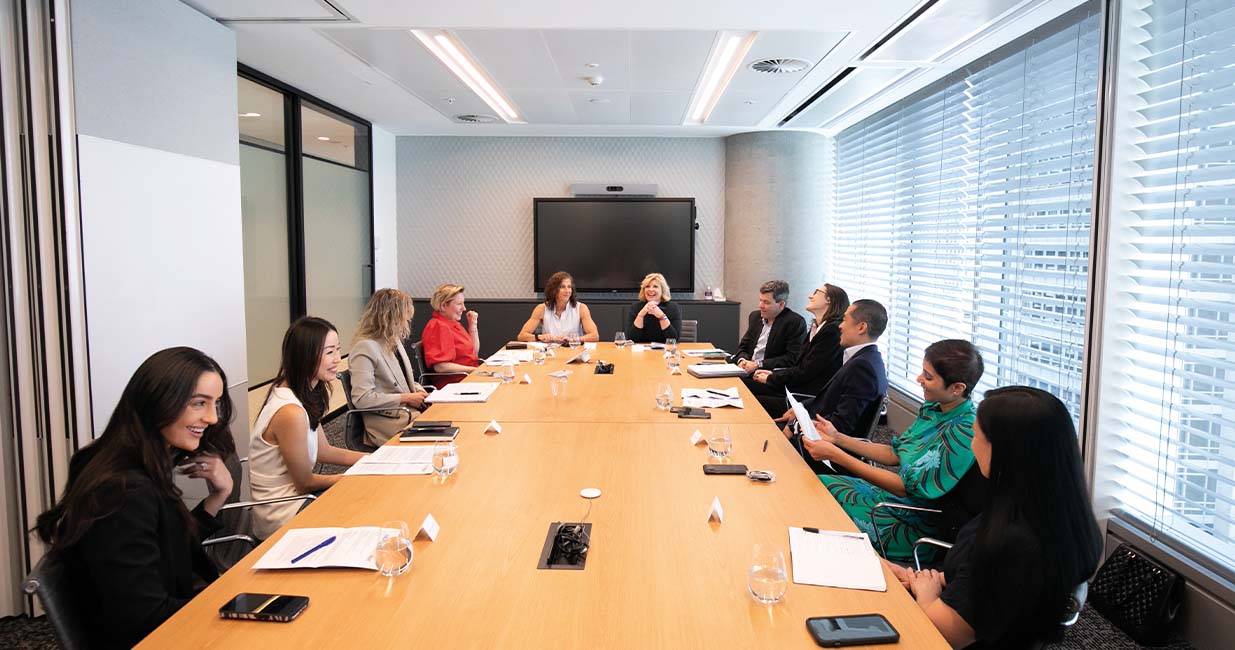
CHOI We find this, too. The Gen Z career lens is very different. Money and career progression are not the only priorities – to attract this generation, businesses have to offer an inclusive workplace. We must provide gender and culturally diverse role models for everyone.
In this regard, actions speak volumes: it is not sufficient just to say we are a certain type of workplace. We have to be purposeful to attract good talent, rather than just putting out an advertisement that says we are culturally inclusive. We are trying to hone in on the gaps. The gender pay gap will only close if we attract a gender balanced workforce across all levels of seniority.
To help with some of these challenges, ANZ has implemented specific programmes to attract talent from outside the general finance area. The objective of our market acceleration programme for women is to attract employees with 2-3 years’ experience. Much like with our graduate programme, we provide successful candidates with six-month rotations across sales, trading and capital markets.
The old way was to provide a job description and effectively leave new starters to figure it out. Our new approach is to support employees through the process of understanding the finance industry. Using this approach and our rotation scheme, these candidates can ultimately choose from a wide range of options.
GIRARD WiBF hosted 10 in-person events in Sydney and Melbourne this year to discuss economic trends, careers and diversity in leadership. There is an increasing trend with our corporate members to attract new talent from outside the industry. These might be individuals from a range of backgrounds: law firms, insurance firms or engineers, for example. Many of their skill sets are transferable.
One of the sessions we hosted discussed diversity in trading; more than 100 recent graduates and university students attended. It provided a platform to explore what inclusivity and work-life balance looks like within the trading sector. While not the main aim of the event, it also allowed one of our corporate members to recruit two new employees. They were excited to see the immediate results from this unconventional way of meeting potential candidates.
TRIGONA We have put in place inclusive hiring practices to attract candidates from various backgrounds, which includes improving job descriptions after we realised that many are inadvertently male-oriented.
We were finding that a woman would read a job description and decide it was not for them, writing themselves off without even applying. Yet these could have been the people we would most like for the role. Making a conscious effort to consider how a job might be viewed by male and female interviewees offers a more inclusive way of hiring.
We are also trying to ensure that at least two women are in the interview pool for any role. Having an even split between men and women in the interview process takes the gender issue away from decision-making.
VENKATESAN These are the most challenging times for recruitment and retention as we have the most diverse workforce ever. Employees are starting work sooner and retiring later. We have a Gen Z population, global mobility resulting in diversity of cultures and increased participation of women in the workforce.
In this environment, rather than adopt a one-size-fits-all approach companies need to consider ways of attracting and retaining talent that enable them to promote an inclusive culture.
One of the companies I work with has a much younger cohort and, to Michelle’s point, has had a clear focus on purpose, ESG and open communication. It has a two-week paid hobby programme: the company will suggest a shortlist of six or seven possible ideas within a certain dollar value. It pays 70 per cent of the cost of the programme or absorbs the full cost if an employee does the programme with a colleague. The idea is to ‘buddy’ with somebody as another way to promote communication and have a positive influence on work culture.
Networks, groups and balancing inclusivity
Larger Australian businesses now reliably offer leadership and mentorship programmes. The next phase may be a focus on inclusivity – so opportunities are offered fairly and responses to the problems and challenges different groups face can be collectively developed.
CHOI The market acceleration programme seeks to attract talent at the junior-to-middle management level while the WIL programme is targeted at senior-level women in markets.
This year, we had a cohort of 29 senior females in our WIL programme. It aims to retain senior women by supporting female leadership in the higher ranks, which it does via a leadership course providing exposure to senior management. It is a global programme with attendees from Australia, and also Taiwan, Singapore and New Zealand via virtual access.
The attendees do not always know each other so the programme also provides an opportunity to share experiences and challenges among women in the capital Markets industry. Different markets have their own unique sets of challenges so the programme also provides insights into other parts of the business and on career progression.
It is important to note that these kinds of initiatives also provide valuable knowledge for the programme’s creators. We have made some tweaks along the way to take into account the diversity of employees and to reflect that people have different ambitions.
We have designed these programmes with the objective of moving the dial when it comes to gender parity across all levels of the business. We are looking forward to achieving these goals so these programmes are no longer needed.
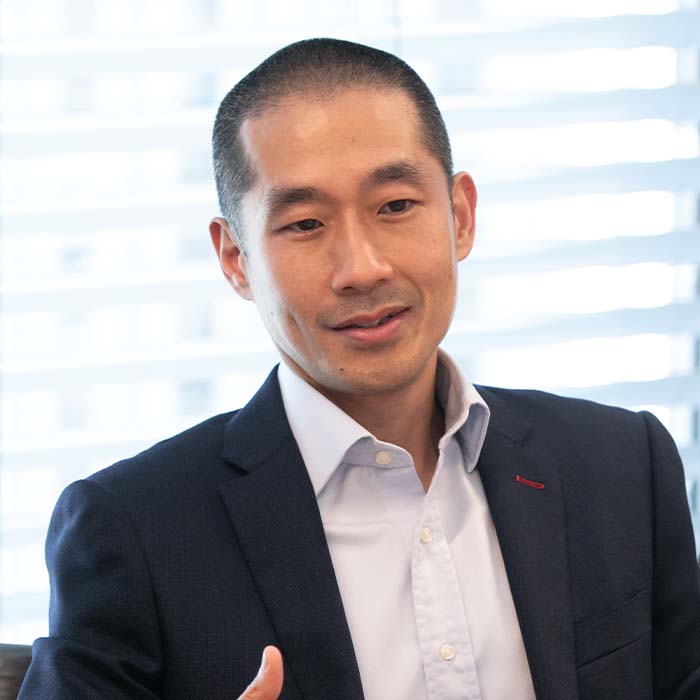
Despite our best efforts to be inclusive, where programmes are targetted at women it is understandable that some men can feel left out. This something we have recognised, and we have introduced the 'male allies' group to provide support as well as data and education on the importance of gender balance.
Tipler How important is the diversity – gender, race and background – of the existing workforce when it comes to attracting new employees?
ZHANG My experience when I joined the workforce in 2017- 18 was that the top graduate programmes all actively engaged with universities. ANZ was more likely to bring graduates alongto these sessions, though. This was my first touch point with ANZ and the group was representative of the graduate cohort at the time.
While it is important to see that a workforce is diverse, it is more important to a university student to be able to picture themselves as part of the group. This does not mean everyone must look like me or tick the same boxes as me. The important thing is how they interact with me. It was important to see the type of people they are and whether I could imagine myself as part of that group.
In my time in the workforce, I have worked with people who are completely different from me. What matters is whether my team makes me feel that I am accepted as a person – and that I can envisage myself progressing through the team.
CAKAROVSKA I have a similar experience. In previous interviews, companies used a traditional recruitment process: I was given my job description, talked through expectations and answered behavioural questions. I knew very little about institutional banking prior to joining ANZ except that the industry was, broadly, an area I was interested in. The idea of a graduate programme where I would rotate through a range of roles was therefore very appealing.
At my interview, the impression I got was that ANZ is a values-led organisation. The questions I was asked were framed to get to know me and to ascertain cultural fit. The interviewer’s philosophy was that they could teach candidates the required technical skills and therefore what they were really looking for was curiosity and a willingness to learn. This stood out to me as a very different recruitment process from previous interviews where the questions and processes felt more ‘traditional’.
I have been at ANZ for almost four years and my conclusion is that what I experienced comes down to culture. While short-term industry drivers such as remuneration and favourable company polices will always be prevalent in the market, culture will always prevail in the long term.
People sometimes joke that Gen Z’s idea of company culture is just table tennis and free food and drink. But what we actually want is a culture that will challenge us, that is empathetic and values-led, and provides career progression as well as learning and development opportunities. These are the values I best align with and, in my opinion, a company will attract and retain talent if these values are core to what it does.
Tipler Are there any practical applications businesses can implement to harness a positive work culture?
CAKAROVSKA I should say there is an element of individuals needing to be proactive to make connections and seek opportunities. Having said this, it is important that businesses provide opportunities for learning and development, and that they have the infrastructure in place to support these opportunities.
Fiona’s earlier comments about proactive and inclusive leadership are important in this situation, too. Age, gender and culture are not the only factors important to a diverse workforce – people are driven by many different things. If a leader can understand what drives and motivates their people, and come from a place of empathy in getting to know their coworkers, it will always lead to a better outcome.
YETSENGA Those of us who are of a certain vintage were trained to respond to inequality by not focusing on people’s differences and trying to treat everyone the same. Unfortunately, studies have discovered that we tend to try to treat people like we treat ourselves, which means we tend to disenfranchise people who are not like us.
To improve labour market performance, we need to recognise and focus on employees’ differences in a way that lifts them, rather than pretending everyone is the same.
ZHANG People are driven by different things, which makes listening very important. It is easy to assume what young people as a cohort want. Yet Rebecca and I probably want very different things. When we talk about positive work culture, practically it means a junior being comfortable to have these kinds of conversations. If a senior person with influence in the organisation is really listening, it is very powerful. It is not always easy to achieve, though.
TRIGONA In February this year, we launched an inclusive leadership programme to develop the knowledge, skills and behaviours necessary to lead diverse teams effectively. We are training about 70 leaders initially to be aware of how to support all employees and fulfil their needs.
We want to ensure a culture of inclusion across the company that the leaders will drive – but we cannot assume that all our leaders will know how to do so. The programme will grow and we plan to roll it out across the company.
A core objective of the business is to make sure we retain talent. We make big investments in our people and we want to help them get the most out of their careers. We are already seeing huge changes because of the programme.
To Lia’s point, we want employees to be able to speak up. Having a culture where employees communicate is very important. We want our people to feel secure and have safety within the workplace.
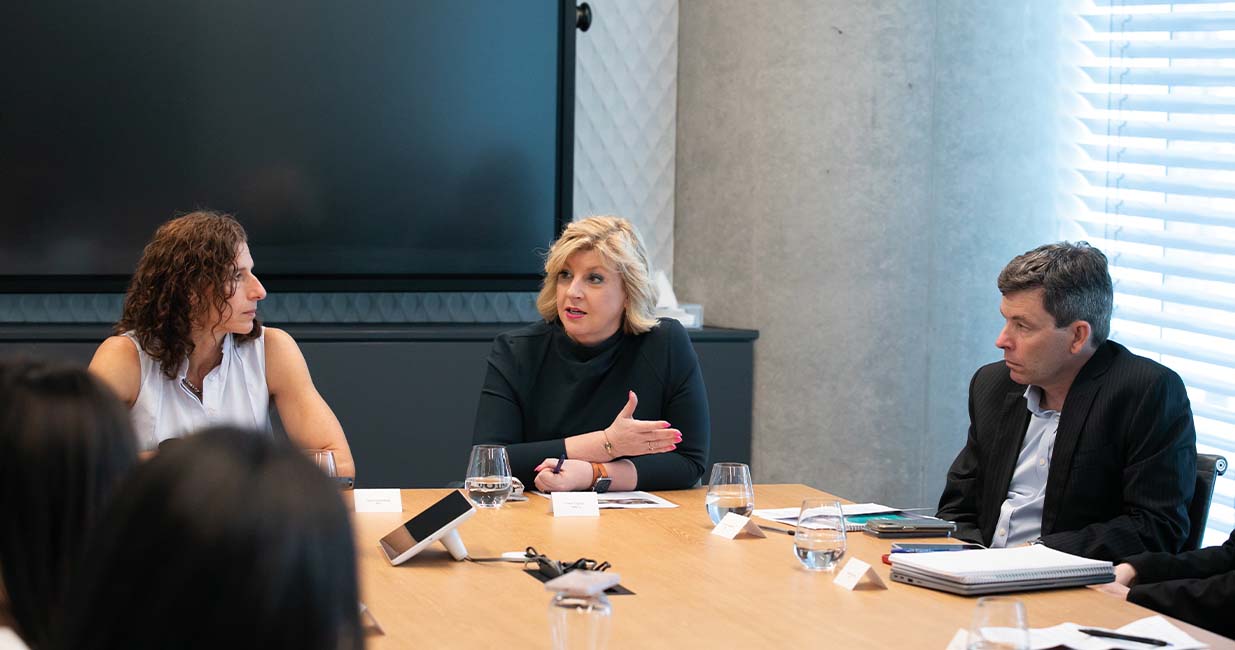
WALKING THE WALK
Craig What else is needed to advance progress on diversity in the workplace for the benefit of employees but also businesses themselves?
CAKAROVSKA It is important for companies to communicate the motivations for their actions effectively. This means, forinstance, company management not only articulating that a balanced workforce is important but also why it is important.
It is crucial that we give fulsome and meaningful explanations from the top, using data and outcomes. Without this, companies risk wading into the murky waters of tokenism. Articulate champions of all genders ensure the right messages can trickle down into broader conversations and positively influence perception.
SICHLAU I very much agree that effectively communicating the right messages is key. I see it as a big part of the middle-to-senior management challenge. Anecdotally, I hear that interviewees often don’t know why their job applications were not successful – which means they can be quick to blame external factors rather than accepting that there may have been a better candidate.
Taking this to a wider perspective, unless we can articulately explain outcomes there will always be groups of people who think the system is working against them – who feel they are not where they should be but don’t have the feedback or support to help them get there. While we don’t always explain outcomes well enough, I think we are improving.
As we increase diversity, what used to be a small pool is now a much larger pool of competition. In this context, it is worrying when we hear that an applicant thinks they were not successful because they are male. This is where we need to have answers that articulate the skill sets we are looking for and the thinking behind our decisions. The world is extremely competitive, particularly at director level: whether male or female, it is hard to attain these roles.
TRIGONA We have not yet discussed targets. NBN has a target of 40 per cent women in management positions by 2025. We are currently at just more than 34 per cent. Organisations talk about the appropriateness of targets but, for us, 40 per cent still means 60 per cent of employees are not women.
We foster a workplace environment that is safe, respectful and inclusive for everyone. But we need some kind of target to aim for – even if it is simply a matter of more women attending interviews, this will eventually convert into successful hires.
Again, we are back to the inclusion piece: we are committed to promoting DE&I, and targets are vital to ensure focus – otherwise we may end up taking backward steps.
VENKATESAN Some of the boards I sit on have targets and others do not. But gender diversity is measured by women at each level across all companies. A key focus has been employees’ health and wellness, to ensure organisations are catering for the needs of distinct populations and not just one cohort.
We want flexibility, and this goes back to the conversation about understanding that different people want different things. Work health and safety is a significant part of every board discussion these days.
The other thing that has started to enter board discussions is career advancement opportunities – not just for the top level but all the levels below. We talk about how organisations are investing at each level, to ensure the full range of opportunities is being offered.
GIRARD WiBF has been having conversations with industry leaders to identify the skill sets our members will need to stand out in the next 3-5 years. We take pride in offering a wide range of education programmes tailored to meet the needs of our diverse membership base and have adapted over the years to cater specifically to our members’ needs.
A recent request was for us to provide training for staff performance evaluation. Being able to articulate successes properly is a key factor in career advancement.
Continuous learning is crucial in today’s rapidly evolving job market, and our commitment to providing comprehensive educational opportunities reflects our dedication to supporting WiBF members’ professional growth and success.
SICHLAU In my career, I have experienced the different ways that skill sets and attributes are valued. There were times when a manager would see an attribute in a peer that would translate to career progression in a way that was not necessarily inclusive or diverse.
As an industry, we need to educate on the different attributes and skill sets that are valuable to our organisations. We need to innovate and improve processes, and this requires different ways of thinking.
People in hiring positions must start to think about how they value a broader range of skills as much as they value the more traditional, technical requirements. Some skill sets can be stereotypically gendered and are not necessarily weighted in the progression of a person’s career. It is very easy to measure how many deals we have done; it is much harder to measure how a person is inclusive and leads their team.

WOMEN IN CAPITAL MARKETS Yearbook 2023
KangaNews's annual yearbook amplifying female voices in the Australian capital market.



